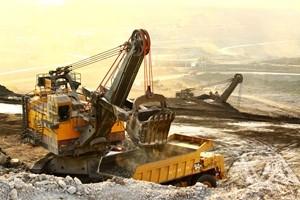
Reliability-centered Maintenance as a Top Mining Priority
Can smarter asset management and maintenance strategies address mining issues of today, as well as those on the horizon?
When they supply manufacturing and other process industries with the minerals they need to service their customers, the U.S. mining industry also performs an incredible service to the stability of the nation. The mining industry processes hundreds of billions in minerals each year, and once delivered to other sectors, the materials added more than triple their worth to the economy, according to the National Mining Association. Mining is the fuel for the engine of production.
An industry so valuable to the economic integrity of the U.S. requires reliability-centered maintenance initiatives to protect and preserve mining assets over their entire life cycles. By investing in regular, data-driven repairs, mining assets have the potential to last longer, and their owners avoid cost increases related to inefficient operation, downtime and replacement, among others. But mining is an industry like no other, one with its own set of unique challenges.
Long hours of operation take their toll on mining assets
So long as there are minerals left to mine, a mining company’s extraction process will continue to be lucrative. But while mine workers and equipment operators in the U.S. average just over 44 hours weekly, according to the U.S. Bureau of Labor Statistics, the assets they utilize on the job may virtually never really stop running. According to literature published by the state of Illinois detailing a day in the life of a coal miner, many mines operate 24 hours per day. So, while workers might come and go according to their shift schedules, on-site assets function around the clock.
“Operation without end increases an asset’s susceptibility to inefficiency and breakdowns.”
These conditions present two problems for mining assets and the legacy maintenance strategies used to protect them: First, running machines constantly for long hours obviously puts an incredible amount of physical strain on the equipment in question. Operation without end increases an asset’s susceptibility to inefficiency and breakdowns. Furthermore, when assets run on a 24-hour operations schedule, any downtime – planned or unplanned – detracts from site efficiency.
That said, planned downtime as part of a reliability-centered maintenance strategy can take advantage of data communicated between machine and managers to reduce time to repair. If mining telemetry effectively predicts machine deficiencies capable of spiraling into full-blown failures, maintenance crews can plan downtime to address these smaller concerns rather than waiting for a big, expensive breakdown. The ability to schedule maintenance in advance delivers benefits all its own. If a mine has any off hours, even a handful a day, maintenance can devote that time to their work orders accordingly.

As mining demand rises, so does the significance of uptime
If the previous points didn’t stress the importance of asset reliability and continuous production, hikes in mining demand will. Industrial and technological trends have added pressure to the mining industry, compounding the need for maintenance programs designed specifically to enhance uptime.
By the NMA’s assessment, the average computer chip contains upwards of 60 different minerals and elements, all requiring mining operations. Moreover, the latest technological advancements may involve expanded mining operations to extract new metals – in 2011, Technology Review discussed how the U.S. is the largest consumer of cobalt while, at the time, mining none of mineral itself. That has since changed.
“As businesses move back stateside, procurement will need to follow suit.”
Additionally, reshoring may also increase mining demand in the U.S. According to the Reshoring Initiative’s 2014 data report, America went from losing 140,000 manufacturing jobs per year to overseas companies to gaining 10,000 per year in the last decade. As businesses move back stateside, procurement will need to follow suit, lest they undermine the cost efficacy of relocating to the U.S. by sourcing abroad.
Reliability-centered maintenance for mining assets keeps equipment availability high and mines in operation. As heightened demand pushes productivity to the limit, every machine extracting or transporting minerals will require support from a maintenance plan working alongside asset management best practices to secure availability.
The prosperity of future mining operations depends on the industry’s ability to respond to forecasted demand, so why not use the same principle to enhance asset functionality? With reliability-centered maintenance, mine workers and machine operators turn asset data into actions, thereby reducing maintenance costs, eliminating large-scale failure events, improving safety and throwing their full weight behind value-added operations.





